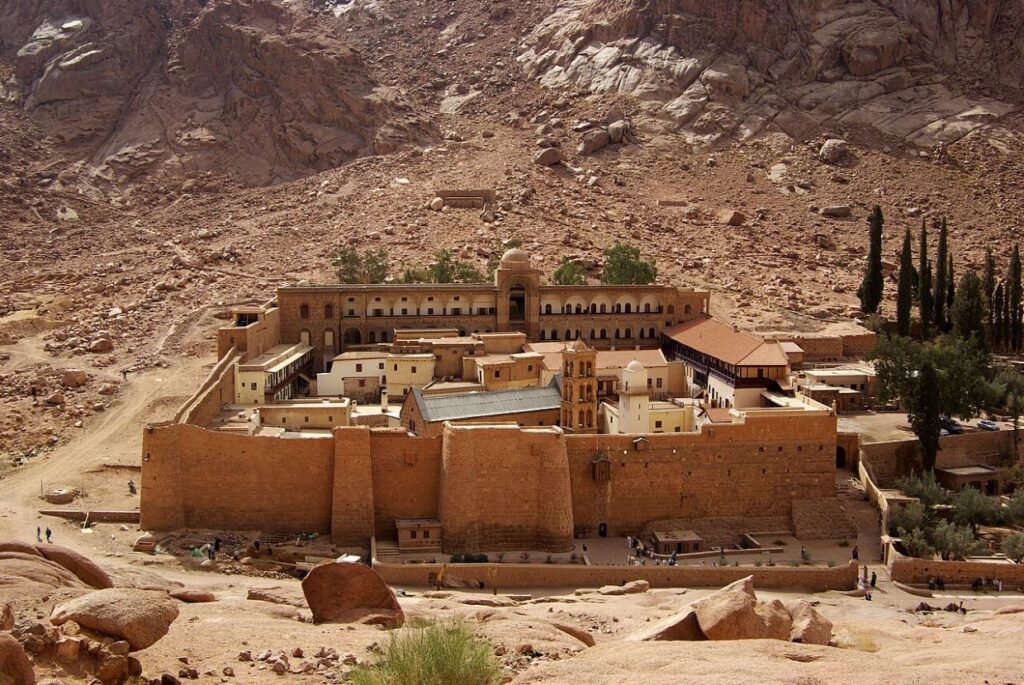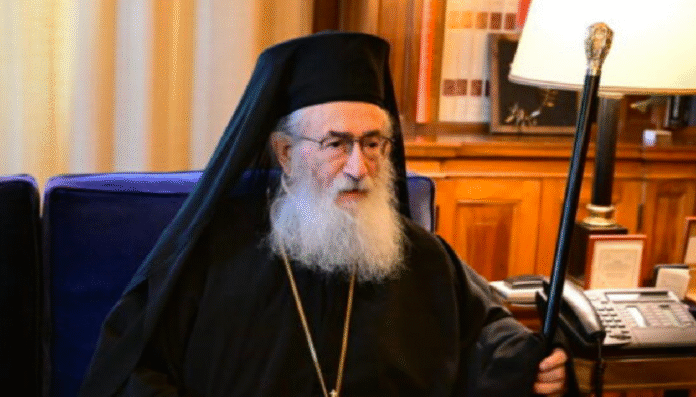Background of Archbishop Damianos’ Transfer
The transfer of Archbishop Damianos from Egypt to Athens represents a significant moment in the interplay between religious authority and governmental intervention. This complex situation is rooted in the growing tension between the Coptic Orthodox Church and Egyptian authorities, which has, in recent years, led to considerable scrutiny of ecclesiastical leaders. Archbishop Damianos, known for his commitment to the Coptic community and advocacy for religious freedom, found himself in a precarious position that necessitated government intervention for his safe relocation.
The immediate circumstances surrounding his transfer are critical to understanding the influences at play. As transit was imminent, concerns about a potential arrest by Egyptian authorities loomed over Damianos. His outspoken stance on various social and political issues had made him a target, leading to fears that his presence in Egypt could provoke further crackdowns from the government. In response, the Greek government stepped in, highlighting its role as a protector of Greek Orthodox clerics abroad. This intervention underscores a historical precedent; similar past incidents have revealed the delicate balance church leaders must maintain to navigate faith and governance in regions where religious institutions face political pressure.
The Current State of the Holy Monastery of Saint Catherine
The Holy Monastery of Saint Catherine, situated at the foot of Mount Sinai, has maintained an enduring legacy that transcends centuries. This historical and spiritual site, renowned for its rich collection of religious manuscripts and artworks, continues to flourish despite the recent transition resulting from Archbishop Damianos’ departure. The monastery is not only a bastion of Christian faith but also a cultural and historical monument recognized by UNESCO as a World Heritage Site, attracting pilgrims and tourists globally.
Currently, the Holy Monastery is under the stewardship of the Holy Sinai Brotherhood, which ensures that its religious and operational activities proceed with continuity. The Brotherhood has diligently maintained the monastery’s spiritual practices, offering prayers and services that uphold its essential functions. These practices are integral to the monastery’s mission as both a place of worship and a center of knowledge, education, and hospitality for visiting pilgrims.
In light of the changes in governance, the Greek Ministry of Foreign Affairs has emphasized its commitment to the ongoing operations at the Holy Monastery of Saint Catherine. The Ministry has issued statements asserting that the transition will not affect the monastery’s status or day-to-day activities. Enhanced security measures have been implemented to ensure the safety of monks, staff, and visitors. These measures encompass both physical and procedural safeguards designed to protect the sacred site while allowing for its continued accessibility to the faithful.
Furthermore, the preservation of the monastery’s historical artifacts remains a top priority. Ongoing restoration projects and careful monitoring of the site reflect an unwavering dedication to safeguarding its cultural heritage. The collaborative efforts of the Brotherhood and the Greek authorities underscore the importance of this revered institution, even as it navigates the complex dynamics of faith and governance.
Reactions from the Patriarchate of Jerusalem
The departure of Archbishop Damianos has elicited a multifaceted response from the Patriarchate of Jerusalem, reflecting deep-seated concerns over his controversial statements made prior to his transfer. The archbishop’s announcement stirred significant unease within the patriarchate, prompting discussions that highlight the delicate equilibrium between church governance and individual authority. Many members of the clergy voiced their apprehension regarding the implications of his statements, framing them as potentially disruptive to the longstanding traditions and governance structures of the church.
Historical context plays a crucial role in understanding the patriarchate’s reaction. Throughout his tenure, Archbishop Damianos maintained a complex relationship with the Jerusalem Patriarchate, characterized by both collaboration and contention. His departure marks a pivotal moment, underscoring the challenges faced by church leadership in navigating personal and institutional dynamics. The patriarchate’s concern is not solely about the archbishop’s individual actions but also reflects a broader anxiety regarding the unity and coherence of the church’s mission. Any perceived deviation from established protocols might undermine the collective authority of the church leadership.
In light of these tensions, the Patriarchate of Jerusalem has issued a call for a new election for the abbot, signifying a desire to restore order and reaffirm collective governance. This decision, while pragmatic, also serves as a public testament to the patriarchate’s commitment to maintaining ecclesiastical integrity and authority amidst potential discord. The implications are significant; the way in which the church addresses this situation may set a precedent for future governance and highlight the challenges of balancing tradition with contemporary issues. As the patriarchate moves forward, the interplay between faith, governance, and individual actions remains critically important to the church’s unity and mission.
Future Implications for the Sinai Brotherhood and the Church
The transfer of Archbishop Damianos has stirred contemplation regarding the future of the Sinai Brotherhood and the broader church community. As the Brotherhood faces the task of electing a new abbot, the processes involved will likely be scrutinized to ensure they align with canonical guidelines. The election of the new leadership presents an opportunity for the Brotherhood to engage in a thoughtful selection process, emphasizing the importance of spiritual integrity and continuity within their monastic community.
The role of the Holy Synod will be crucial in maintaining canonical order during this transition. The Synod is responsible for overseeing the election process, ensuring that it is conducted fairly and reverently. Their involvement will not only affirm the legitimacy of the new abbot but also help to reinforce the governing structures of the church. This oversight is vital for maintaining unity and avoiding potential conflicts within the Brotherhood and the church hierarchy.
Upon the election of a new abbot, the dynamics between this leader and the Patriarchate of Jerusalem will be a focal point. It is anticipated that the relationship will be characterized by mutual respect and collaboration, as both entities share the common goal of fostering spiritual growth within the Sinai community. However, the extent of cooperation might be influenced by the new abbot’s perspective on church governance and their approach to addressing contemporary challenges faced by the Sinai Brotherhood.
The transfer of Archbishop Damianos therefore represents a significant turning point, not only for the leadership of the Sinai Brotherhood but also for the religious landscape of the region. Changes in leadership often signal shifts in policy and direction, which can have far-reaching implications. The community of monks will need to navigate these new dynamics while remaining committed to their monastic vocation, maintaining a focus on faith and service amidst the evolving governance of the church.



